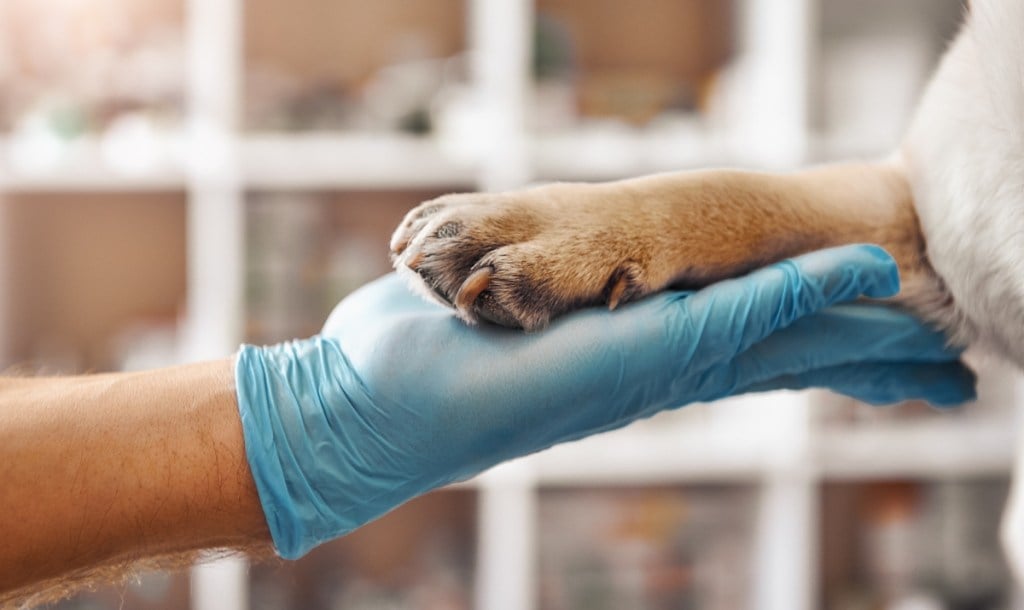Table of Contents
Imagine this scenario: you have friends over on a Saturday night, and someone sets a large plate of fudge on your coffee table. A few minutes later, the plate is left unattended, and your dog immediately scarfs down the chocolate. You rush your dog to the veterinary emergency hospital. The veterinarian calculates how much chocolate your dog ingested. They decide that your dog’s prognosis is relatively good, but aggressive treatment is needed at an estimated cost of $1,800. You have a credit card, but you have limited available credit and an upcoming expense that must be charged to that card.
What would you do?
Without pet insurance, your options may be limited. You could apply for a new credit card, ask a friend or family member for a loan, or fundraise for your pet’s care, but all of these can be difficult to do on short notice. You might choose a bare-bones treatment plan with a lower likelihood of success, and hope for the best. Unfortunately, that comes with its own drawbacks.
Pet insurance, however, can reduce or eliminate the stress associated with pet illnesses and emergencies. Read on to learn more about how pet insurance can offer peace of mind for pet parents.
The Benefits of Pet Insurance
In an emergency, pet insurance can be invaluable. Instead of selecting a level of care based on budget, pet insurance allows you to select the care that is best for your pet. You can listen to the veterinarian’s recommended treatment plan with an open mind, focusing on the pros and cons of treatment instead of focusing on costs. You can authorize the care that is best for your pet, without having to consider how that care will affect your monthly budget.
Pet insurance isn’t just for emergencies. It can also offer significant benefits for illnesses or chronic diseases. For example, the American Veterinary Medical Association estimates that approximately 1 in 4 dogs will develop cancer at some time during their lives. While some cancers can be treated easily, others require radiation treatment, chemotherapy, or other costly treatments. Pet insurance can remove the financial element from treatment decisions, allowing pet parents to focus on what is best for their pet.
How Does Pet Insurance Work?
Pet insurance is intended to alleviate the financial stress associated with a pet’s illness or injury. Some pet insurance plans also offer limited wellness or preventive care coverage, but this is relatively uncommon, and it can be expensive. In general, it’s best to view pet insurance as coverage for emergency situations – illnesses and injuries.
There are many different pet insurance plans available, and they can vary significantly in terms of features. Look closely at deductibles and reimbursement rates to understand how you will be reimbursed for your pet’s care. Pay special attention to coverage limits and hereditary/congenital condition coverage; some providers use these limits and exclusions to limit what they will pay out in case of an illness or injury.
Select the plan that works best for your family. You might choose a high-deductible, low-reimbursement plan to minimize your monthly premium, or you may opt to pay a higher premium to maximize your coverage in an emergency. Neither approach is right or wrong; select the plan that best meets your needs and priorities.
After selecting a plan, enroll your pet and start paying your monthly premiums. (If you have multiple pets in your home, each pet will need to be enrolled individually.) Like other forms of insurance, paying your monthly premiums ensures that your insurance coverage is in place when you need it.
If your pet becomes sick or injured, take them to the veterinarian. The veterinarian will present a treatment plan, which may include a combination of diagnostic tests and treatments. Discuss that plan with your veterinarian, asking questions to ensure that you understand their recommendations. Once you and the veterinarian agree on the best course of action, authorize the plan and go ahead with treatment. Pay your veterinarian at the time of service and send the receipt to your pet insurance provider. Your pet insurance provider will reimburse you for a predetermined part of your costs, depending on your plan’s deductible and reimbursement rate.
Pet Insurance Offers Peace of Mind
Pet illnesses and injuries are stressful for any pet parent. While there is no way to remove all the stress associated with an unwell pet, pet insurance can at least remove the financial stress associated with diagnosing and treating your pet’s condition. Additionally, pet insurance offers peace of mind, ensuring you can provide the best possible care for your pet.








